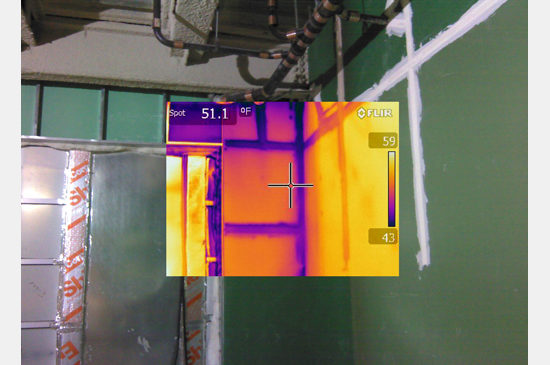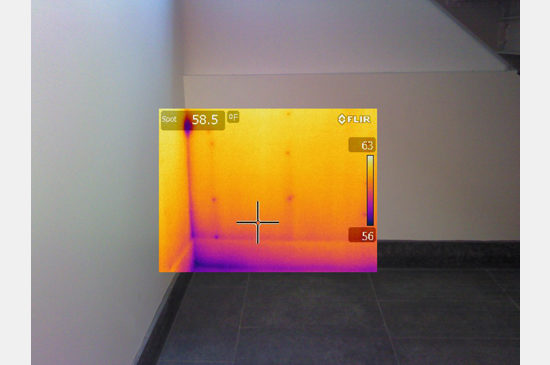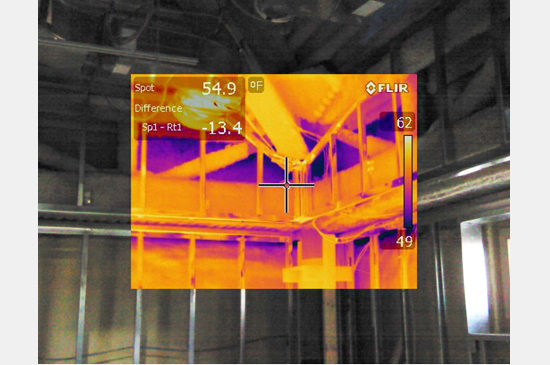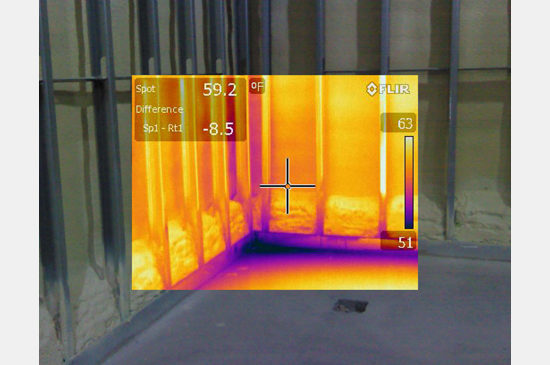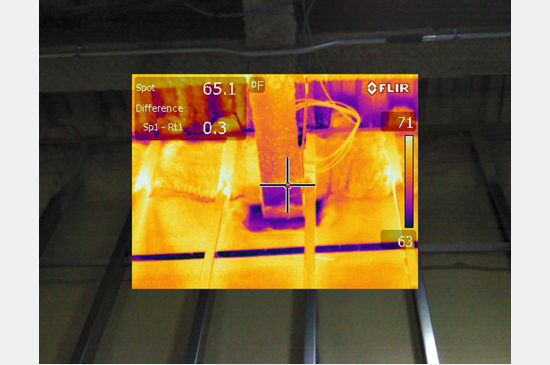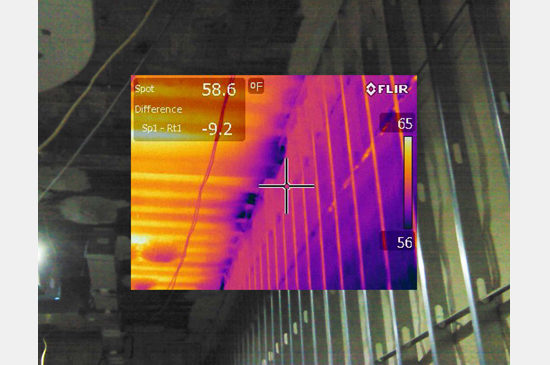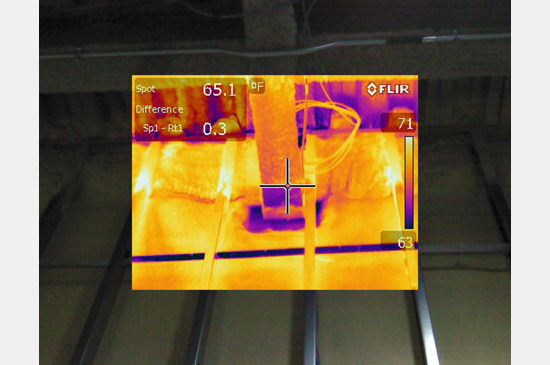
Last year at Architecture Boston Expo (ABX), Andrea Love and Charlie Klee presented PAYETTE’s in-house research on thermal bridging. By analyzing various built details of eight buildings designed by PAYETTE, the effort sought to quantify the impact of thermal bridges on building performance in commercial façades. The initial investigation found that in many common wall systems and envelope conditions, these thermal short circuits had a significant, negative impact on the intended R-value specified in design. Based on this initial research, PAYETTE was awarded the AIA Upjohn Research Grant to continue with this investigation to further understand real thermal performance of building envelopes and ultimately to propose alternative design solutions to industry standards that will provide enhanced thermal performance.
The first step with this grant was to travel to seven additional projects during the winter to take infrared images at targeted areas of the building envelope where thermal bridges had been previously observed to be most problematic. Winter is the best time to take thermal images in the Northeast, because the temperature differential is the greatest between the inside and outside during the season. The bigger temperature delta provides a more accurate image for the calculation of the wall’s R-value, and clearly illustrates the contrast of the thermal bridges in the images.
We have targeted the following areas for thermal images:
Foundation wall transitions
Metal panel wall support connections
Parapet conditions
Roof to wall transitions
Masonry support systems
Window wall transitions
Rainscreen support systems
Curtain wall support connections
Transitions between new and existing construction
Renovated envelope strategies
With thousands of thermal images now taken, we are working through them to calculate R-values and identify conditions that most closely align or deviate from the anticipated assembly R-value.
We will soon begin the next phase of this investigation, where the focus areas will be modeled with a heat flow simulation program to calibrate the models with the images in order to understand what in the design is increasing the heat flow, and to learn if the proposed revisions will provide enhanced thermal performance.



